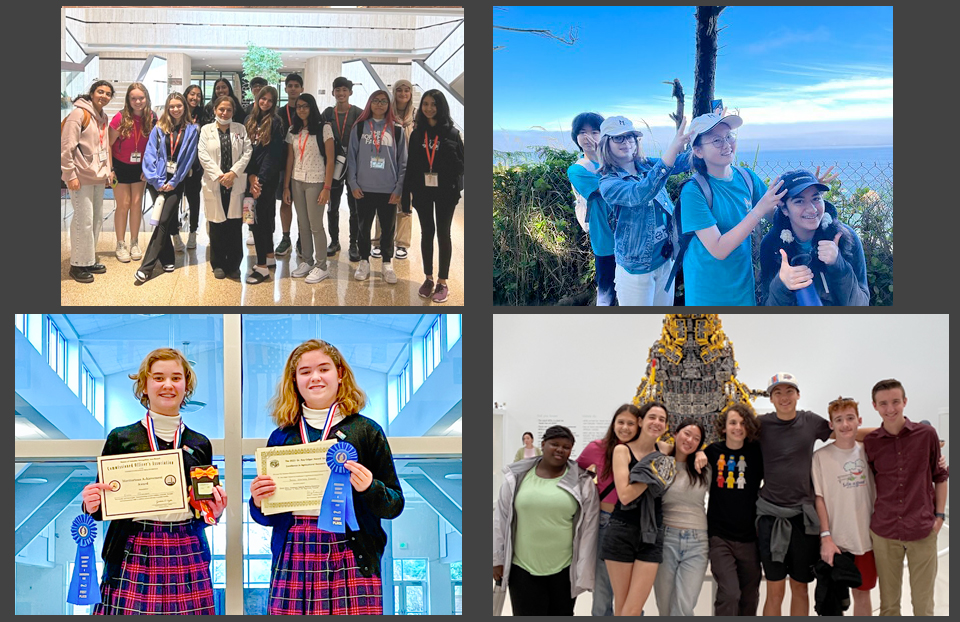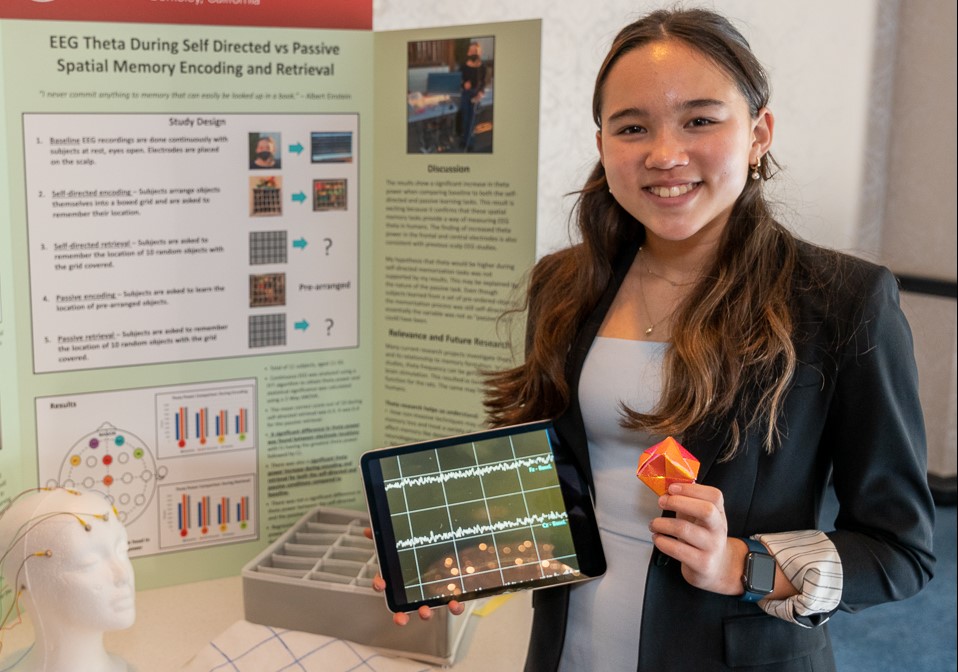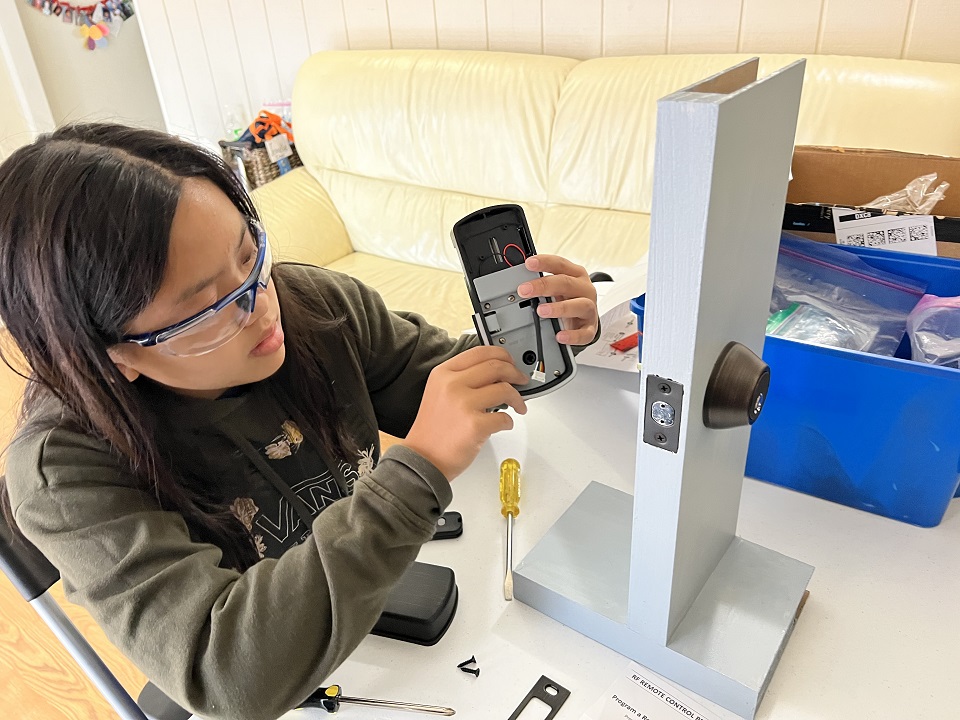National Geographic Society opens its doors to top 30 young scientists
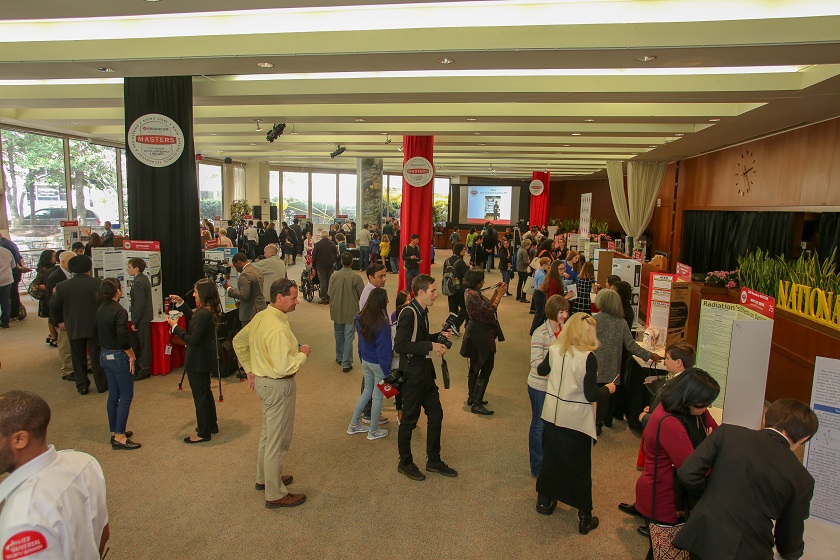
The heart of science is finding a problem that exists in the world and coming up with an innovative solution to address the challenge. These young scientists showcased their innovative projects at the Project Showcase, an event in which the Broadcom MASTERS finalists present to the public the research that earned them their top 30 spots. The event was held at the National Geographic Society in Washington D.C. Read on to learn more about three young scientists and the innovative solutions they came up with using techniques from a variety of scientific fields.
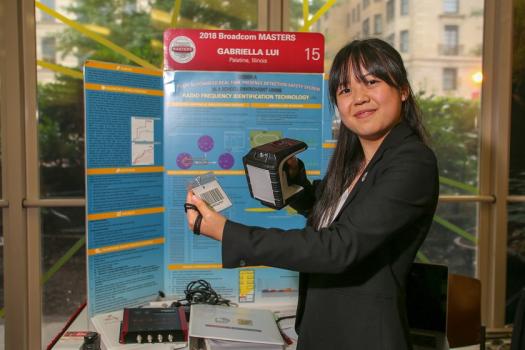
Inventing a Safer Tomorrow
Gabriella Lui, age 14, from Palatine, Illinois, invented a method for keeping track of children when they are at school. Gabriella created smart tags using radio frequency identification (RFID) technology, which could be placed on clothes—these tags are able to constantly transmit the location of those wearing them which will then be relayed to the proper school authorities. She tested her invention in common student spaces to see how well the radio waves could travel through concrete classrooms or metal school buses. Her invention allows parent to locate their children in a potential emergency during school hours.
“A really prominent problem in America lately is school shootings and in order to be able to save these students in time, we have to have an efficient way to locate them.” Gabriella said, “Not only can my system provide real-time location data about students, but it can also provide medical records (provided by the school and attached to a student’s RFID tag) so first responders can provide the necessary medical attention as soon as they arrive on the scene.”
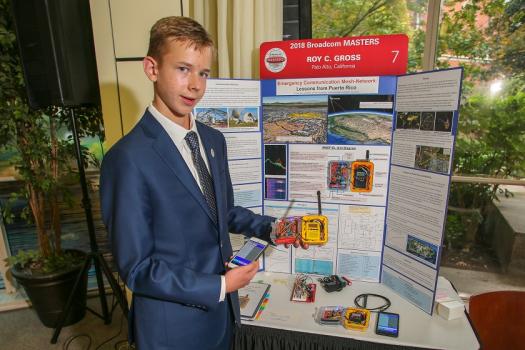
Communicating in Crisis
Roy Gross, age 13, from Palo Alto, California, was inspired to invent his project after witnessing all the chaos and confusion Hurricane Maria left in its wake. It is difficult for people to get in touch with others during an event like a hurricane as the bandwidth will be clogged. He wanted to invent a quick way for loved ones to communicate—a way that is not bogged down by the deluge of telephone traffic that normally follows catastrophic events. Roy decided to incorporate Very High Frequency (VHF) radio technology into his project. VHF allows quick transmission of phone calls and text messages, including GPS information across an ad-hoc network or satellite. Communication is more reliable when is sent through radio waves as opposed to telephone lines or internet.
“When I was watching all the devastation in Puerto Rico from Hurricane Maria from the safety of my home, I felt I had to take action.” Roy said, “I figured out all the chaos was because there were generators and other supplies sitting on airstrips and they just weren’t getting to where they needed to go because of a lack of communication.”
Though the finalist projects encompass different fields, what all these finalists seem to share is a compassion and a willingness to help those in need.
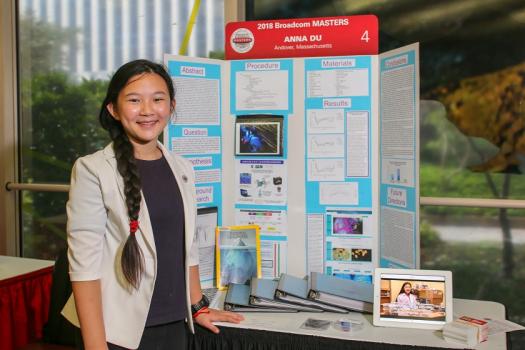
Taking Out the Trash
Anna Du, age 12, from Andover, Massachusetts, is concerned about the challenging environmental problems in the world, that seem to be getting worse by the day. Her research focuses on the abundance of microplastics in our oceans and how to remove them. As of 2017, more than 8 million metric tons of plastic have been dumped into the ocean. These plastics become toxic when ingested by microorganisms and that toxicity quickly makes its way up the food chain.
“My invention identifies microplastics in the ocean using a similar concept to drilling for oil: you have to know where the oil is before you drill, so my project identifies the microplastics using infared light so they can be collected efficiently,” said Anna. “Because the ocean is such a large place, it doesn’t make sense to just send a machine through the entire ocean to collect microplastics.” Her remotely operated vehicle (ROV) helps locate high concentrations of microplastics in a non-toxic way as opposed to current methods and/or substances.
